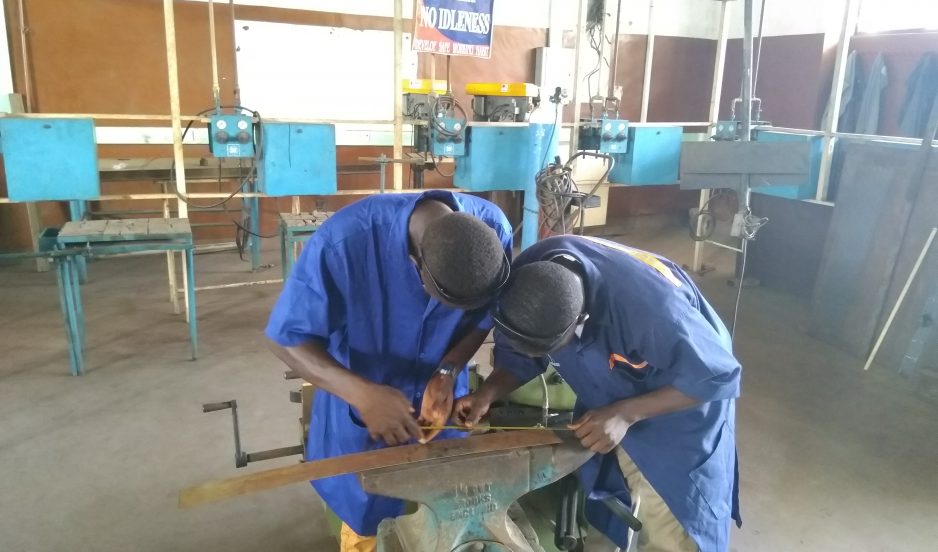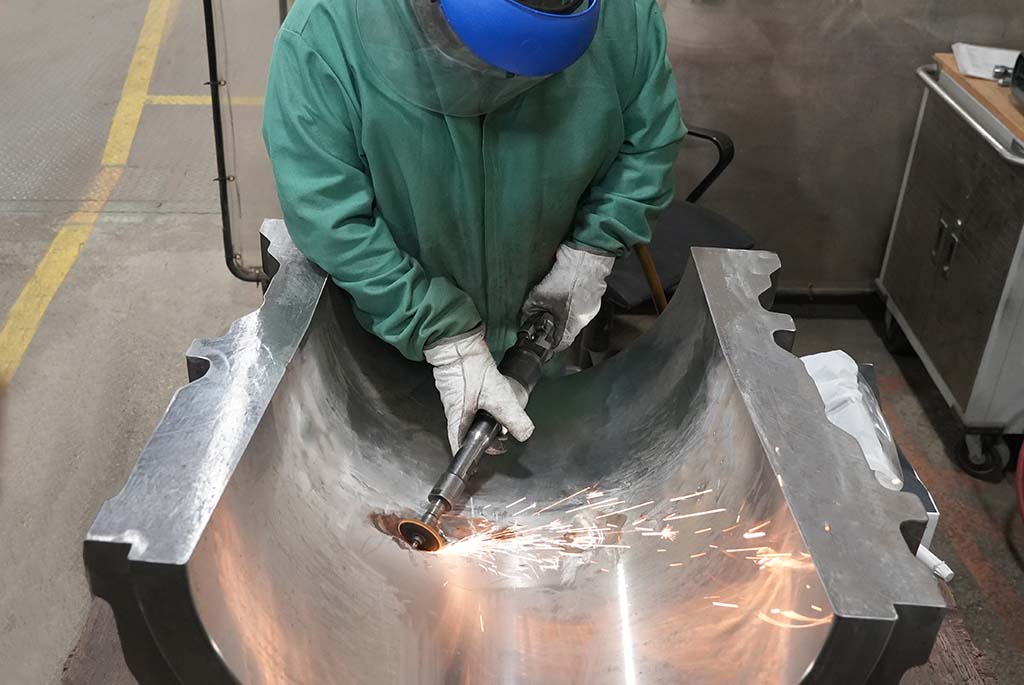Common Welding Repair Work Issues and Just How to Address Them Efficiently
Welding repair work often encounter a variety of issues that can jeopardize the stability of the end product. Usual issues consist of insufficient infiltration, porosity, and misalignment, to name a few. Each defect presents one-of-a-kind obstacles that call for specific strategies for resolution. Recognizing these concerns is essential for welders aiming to enhance their results and abilities. This discussion will certainly check out these common welding repair problems and reliable methods to resolve them.
Insufficient Infiltration
Poor infiltration occurs when the weld steel fails to totally fuse with the base product, resulting in weak joints and prospective structural failures. This issue commonly comes from inadequate warm input, wrong electrode angle, or inappropriate welding speed. Welders may come across insufficient infiltration as a result of a mistake of the required criteria for a certain product density or kind. Additionally, contamination on the base product's surface can prevent effective bonding, worsening the trouble. To deal with inadequate penetration, welders need to ensure proper setups on their tools and preserve a clean job surface area. Routine assessment of welds is suggested to determine any type of shortages early, enabling for timely improvements and the avoidance of compromised structural honesty in bonded assemblies.
Porosity
Porosity is a common issue in welded joints that materializes as little gas bubbles trapped within the weld metal. This issue can compromise the integrity of the weld, causing minimized strength and possible failure under anxiety. Montana Mobile Welding and Repair. Porosity commonly emerges from contamination, moisture, or improper welding techniques, which allow gases to run away right into the liquified weld swimming pool. To deal with porosity, welders ought to ensure proper surface preparation, preserve a tidy working environment, and utilize suitable welding parameters. Furthermore, picking the right filler material and securing gas can alleviate gas entrapment. Routine examination and testing of welds can aid recognize porosity early, ensuring timely restorative actions are taken, thereby protecting the high quality and reliability of the welded framework
Imbalance
Imbalance in welding can develop from numerous elements, including incorrect setup and thermal growth. Recognizing the origin causes is important for effective resolution. Numerous modification strategies are offered to realign components and ensure structural stability.
Sources of Imbalance
Welding misalignment often stems from a selection of underlying issues that can jeopardize architectural honesty. One key cause is incorrect fit-up of elements prior to welding, which can lead to voids and unequal surface areas. Variations in thermal development throughout the welding process can additionally lead to distortion, specifically if the products being signed up with have various coefficients of expansion. Furthermore, insufficient fixturing and securing may fall short to hold elements securely in place, leading to motion during welding. Poorly conserved equipment, including welding devices and devices, might introduce incongruities in the weld bead, more adding to misalignment. Operator error, stemming from inadequate training or experience, can likewise play a significant role in producing misaligned welds.

Modification Techniques Readily Available
Addressing imbalance efficiently calls for a mix of restorative strategies tailored to the particular issues handy. One typical technique is using jigs or components to hold elements in the right placement throughout welding, ensuring constant positioning. In addition, pre-heating the products can help in reducing distortion and boost fit-up. For considerable misalignment, mechanical adjustment strategies, such as using hydraulic jacks or clamps, can be utilized to fix the setting before welding. Post-weld heat therapy may likewise be required to eliminate tensions triggered by imbalance. Ultimately, careful inspection and modification throughout the setup stage can prevent imbalance issues from ending up being significant troubles, advertising a smoother welding process and improving total structural stability.
Distortion
Distortion is an usual obstacle in welding that can arise from numerous variables, including uneven home heating and cooling. Recognizing the reasons for distortion is important for carrying out efficient prevention methods. Resolving this concern not only boosts structural stability yet likewise improves the general top quality of the weld.
Sources of Distortion
When subjected to the intense heat of welding, products typically undertake modifications that can result in distortion. This sensation mostly develops from thermal expansion and tightening during the welding procedure. As the weld location warms up, the material expands; upon air conditioning, it gets, which can create inner tensions. Additionally, unequal home heating throughout a work surface can intensify these tensions, leading to bending or flexing. The kind of material likewise plays a substantial role; steels with varying thermal conductivity and coefficients of expansion might react differently, bring about unforeseeable distortions. Inadequate joint style and inadequate fixturing can contribute to imbalance during welding, increasing the likelihood of distortion. Recognizing these reasons is essential for efficient welding repair service and avoidance approaches.
Avoidance Techniques
Effective prevention methods for distortion during welding focus on controlling warm input and making sure appropriate joint style. Preserving a constant warm input assists to lessen thermal growth and contraction, which can bring about distortion. Utilizing methods such as pre-heating the work surface can additionally lower the temperature gradient, advertising uniform heating. Additionally, selecting ideal joint layouts, such as T-joints or lap joints, can enhance stability and minimize stress concentrations. Carrying out correct fixturing to protect the workpieces in area additionally aids in preserving placement throughout the welding procedure. Staggered welding series can disperse warmth more evenly, preventing localized distortion. By using these methods, welders can greatly reduce the probability of distortion and boost the general top quality of their welds.
Fracturing
Cracking is an usual problem experienced in welding repair services, often arising from different variables such as inappropriate cooling prices, material selection, or inadequate joint prep work. The event of fractures can substantially jeopardize the stability of the weld, bring about prospective failings throughout operation. To resolve this concern, welders must first assess the origin, ensuring that materials work and properly selected for the specific application. Furthermore, regulating the air conditioning price throughout the welding procedure is essential; rapid welding blankets cooling can generate anxiety and result in fracturing. Appropriate joint style and preparation likewise add to decreasing the danger. mig stick welder Implementing these approaches can improve weld high quality and resilience, inevitably minimizing the chance of splitting in finished weldments.

Incomplete Combination
A considerable problem in welding fixings is incomplete fusion, which happens when the weld steel does not appropriately bond with the base product or previous weld passes - Belgrade Welding. This problem can bring about weak points in the joint, potentially compromising the stability of the welded structure. Aspects adding to insufficient blend include inadequate warm input, incorrect welding strategy, and contamination of the surfaces being joined. To address this concern efficiently, welders must ensure appropriate pre-weld cleansing and surface prep work, as well as readjust their welding criteria to accomplish adequate penetration and combination. Routine inspection during the welding procedure can likewise aid recognize insufficient fusion early, permitting timely rehabilitative measures to improve the general top quality of the weld
Overheating
While welding repair work can enhance structural stability, overheating offers a significant obstacle that can lead to material destruction. Too much warmth throughout welding can modify the mechanical homes of steels, resulting in minimized toughness, increased brittleness, and warping. This sensation is particularly critical in high-stress applications where architectural integrity is vital. Recognizing overheating can entail aesthetic inspections for discoloration or distortion, as well as keeping an eye on temperature during the welding procedure. To minimize the risks related to getting too hot, welders ought to use ideal techniques, such as controlling heat input, readjusting traveling rate, and making use of appropriate filler materials. Furthermore, applying pre- and post-weld warmth therapies can assist bring back material residential properties and improve the total quality of the repair service, guaranteeing lasting performance and safety and security.
Often Asked Questions
What Are the Common Indications of a Welding Problem?

Exactly How Can I Test My Welds for Top quality?
To examine welds for top quality, one can make use of visual inspections, ultrasonic testing, and radiographic methods. Each strategy assures architectural stability, recognizes issues, and validates adherence to defined criteria, eventually improving the dependability of the welded joints.
What Security Precautions Should I Take While Welding?
When welding, one must prioritize useful content security by using ideal individual protective equipment, ensuring correct ventilation, protecting flammable products away, maintaining a tidy work area, and recognizing surroundings to avoid injuries and mishaps.
Can I Repair a Weld Without Redesigning the Entire Joint?
Repairing a weld without remodeling the entire joint is possible, depending upon the damages (Montana Mobile Welding and Repair Welding). Techniques such as grinding, including filler material, or making use of a welding procedure can effectively attend to particular flaws while maintaining the surrounding structure
What Tools Are Necessary for Reliable Welding Fixes?
Essential devices for efficient welding repairs include a welding device, cable brush, grinder, protective equipment, clamps, and filler materials. Each device plays an important function in ensuring quality and safety and security during the repair process. Porosity generally emerges from contamination, moisture, or incorrect welding strategies, which permit gases to leave right into the liquified weld pool. Poorly kept tools, including welding makers and devices, might present incongruities in the weld bead, further adding to misalignment. When subjected to the intense warm of welding, products typically undertake modifications that can lead to distortion. Cracking is an usual issue experienced in welding repairs, often resulting from different aspects such as inappropriate cooling rates, material selection, or poor joint prep work. A significant problem in welding fixings is incomplete blend, which happens when the weld steel does not adequately bond with the base material or previous weld passes.